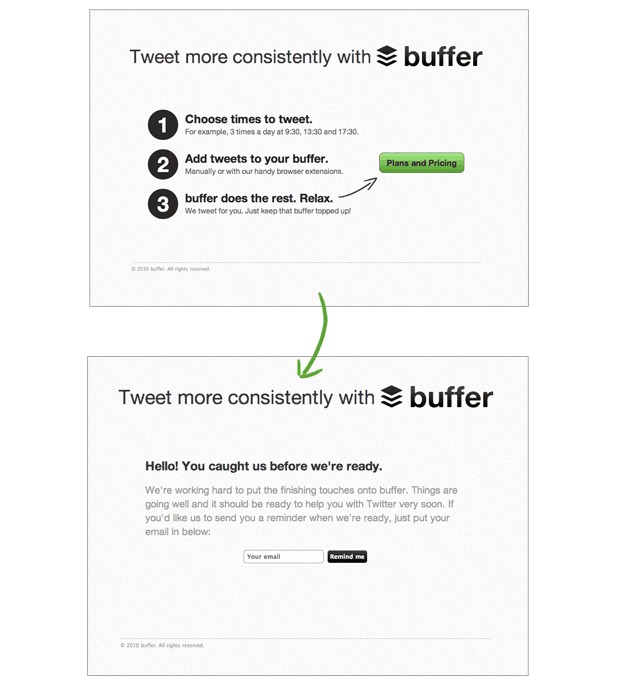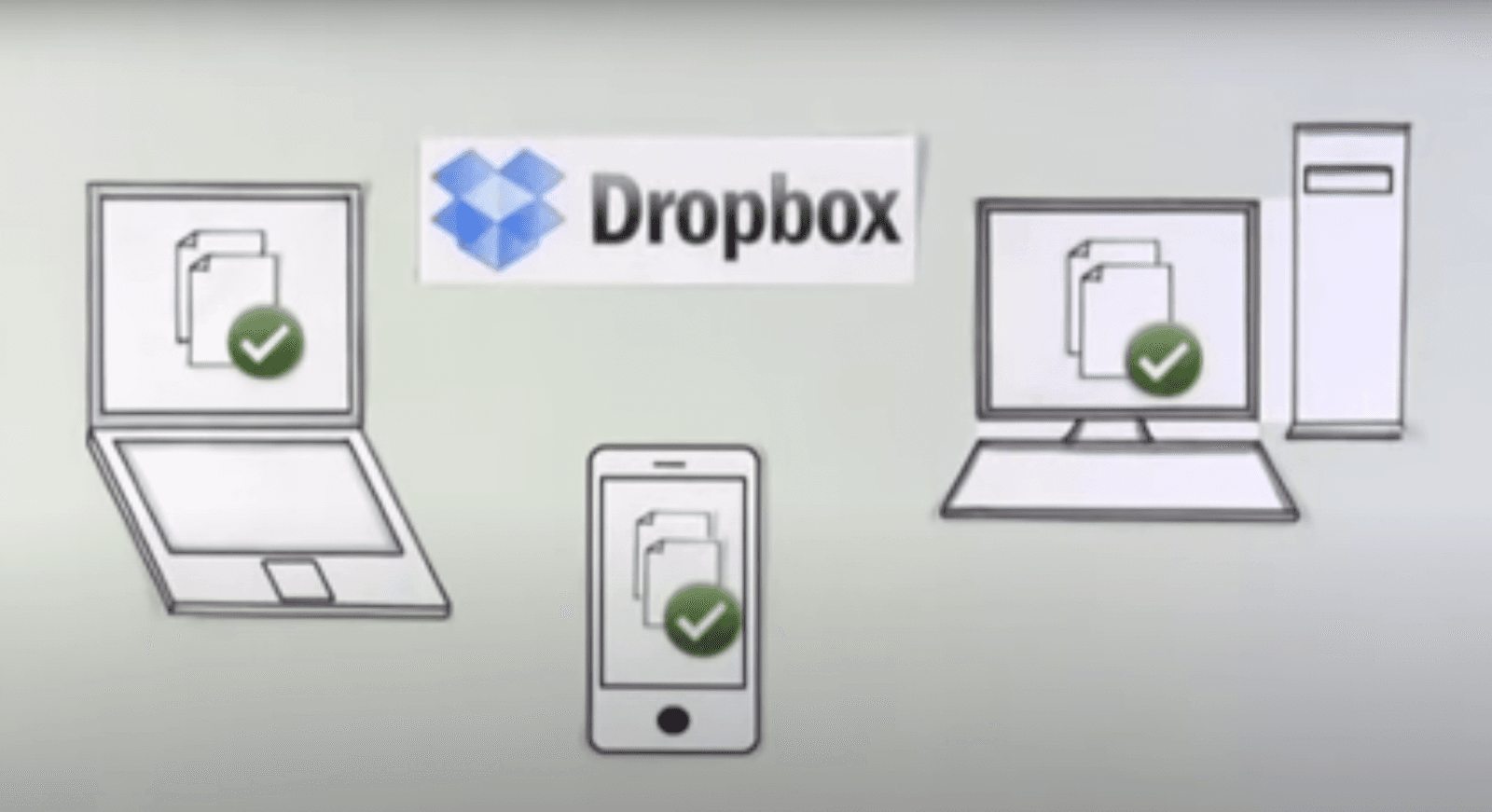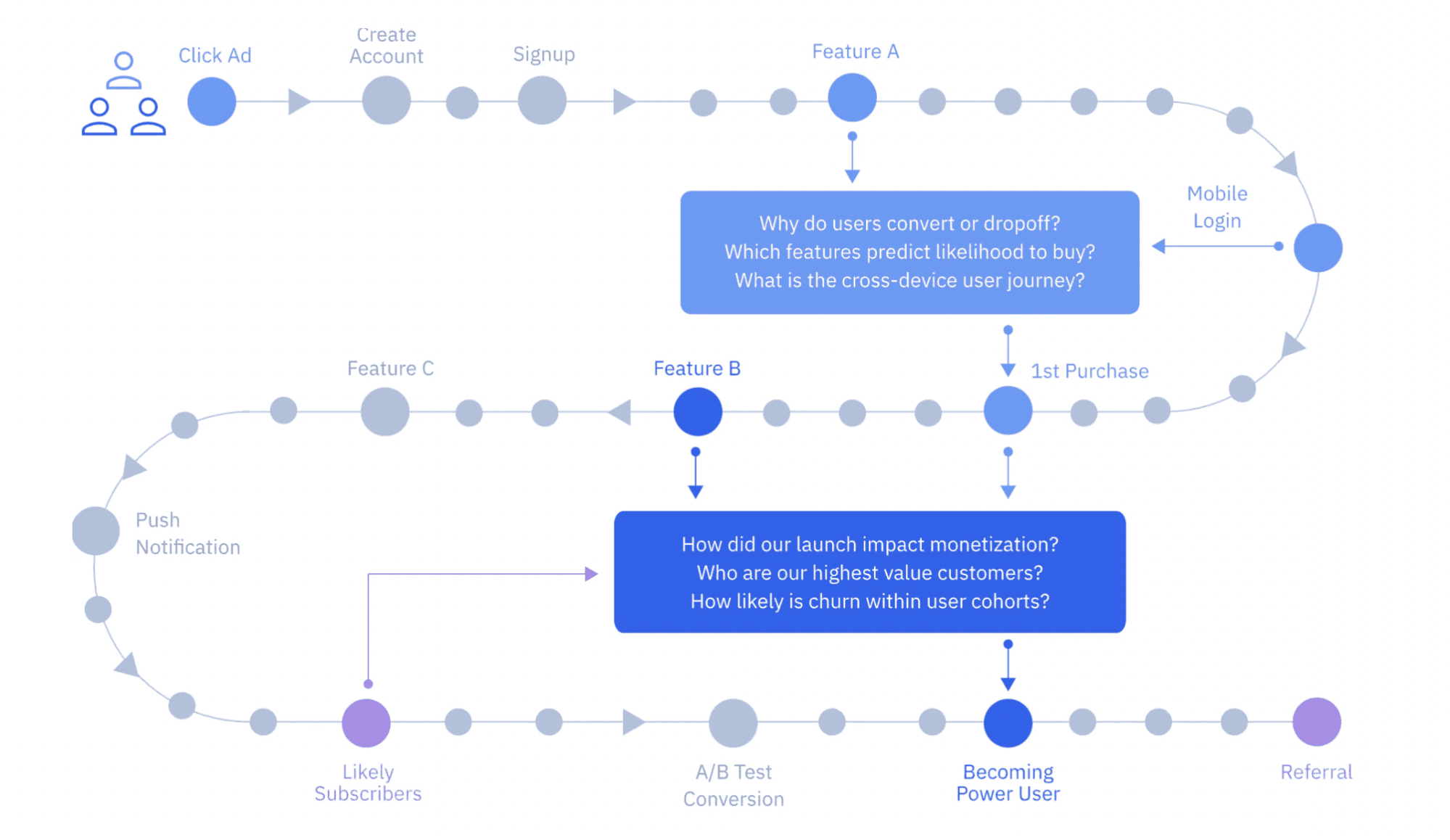What Is a Minimum Viable Product (MVP)?
Learn more about MVPs—minimum viable products (derisked, initial versions of a new product or feature). Designed to elicit feedback from early users and empower teams to build, ship, and learn—faster.
Originally Published on August 28, 2023
Browse by category
Minimum viable products (MVPs) are misunderstood.
How often have you heard someone at work ask you to create an MVP when they mean “the least of something” needed to cross it off a list—for example, the minimum number of words needed to publish a blog post?
In product development, MVPs aren’t synonymous with “the minimum amount of something needed.” If you’re building an MVP, you’re doing it to learn something about your product or users.
We’ll tackle everything you need to know about MVPs—and how to build them—below.
Key takeaways
- An MVP, or minimum viable product, is the version of your product that requires the least amount of input to generate customer feedback for iteration and improvement.
- MVPs can take many forms, including landing pages or prototypes.
- Validating an MVP is the first step before building a more robust product at scale.
What is an MVP?
A minimum viable product (MVP) is a derisked, initial version of a new product or feature. It is designed to elicit feedback from users early in development. In an MVP launch, teams take feedback from early users to validate a product’s basic idea and inform future development—without going to the trouble and expense of building something that might prove undesirable.
So, what goes into an MVP? By definition, no more than strictly necessary to learn something. The goals of an MVP include:
- Quickly learning about perceived user value
- Testing assumptions
- Sourcing real-world feedback for the development of a future, fleshed-out product
In other words: MVPs empower product teams to build, ship, use, and learn—faster. It’s why they’re core parts of the product development cycle and product improvement loop.

The benefits of building an MVP
The MVP framework isn’t just about getting a product to market with limited resources—it has ripple effects for teams and users alike. Some of these include:
- Early feedback from real users. Your pre-launch product is typically based on assumptions about what users want or need, rather than real-time data. An MVP puts your idea in their hands. Whether users love it or hate it, an MVP helps product and engineering teams decide whether a product is worth pursuing and how to build it.
- Fewer sunk costs. If a product isn’t going to work, the response to your MVP will make this clear—saving teams valuable time and resources. The inverse is also true: Positive feedback from users clarifies value, making it easier to ship a lean product.
- Lean development. An MVP is the simplest version of a product that still communicates value to users. An MVP approach to product development helps teams focus on building out essential features and capabilities first.
Examples of MVPs
Some of the most recognizable brands in ecommerce and SaaS started as MVPs. Check these out for inspiration.
Amazon
The largest shopping platform in the world was once a marketplace for one lone product: books. By focusing on delivering value to customers in one key area first, Amazon Founder Jeff Bezos validated his idea for an online retailer.

Buffer
Inspired by Eric Ries’s writings on lean startups and building MVPs, Joel Gascoigne took a simple idea—a platform for easily scheduling tweets—and turned it into Buffer’s MVP, which consisted of two landing pages to validate interest.

When users began to sign up for the beta and even show interest in paying for the service, Gascoigne knew he was onto something and Buffer was born.
Dropbox
Similar to Buffer, Dropbox’s MVP was far from a finished product. Instead, the founding team used a short video to explain the value customers could get from seamlessly sharing files between devices. People agreed—and signed up for the beta in droves.

How to build an MVP
Building an MVP is part of the product development process to establish the core features of a product and iterate based on customer feedback.
There are various ways to approach and build MVPs. If you’re planning your own, here’s an example process.
1. Identify the core audience problem
The first step in building an MVP is identifying a problem. You’ll also need to know who’s facing the problem.
Consider:
- Pain points. Put yourself in the shoes of your would-be users. What jobs are they trying to accomplish, and what issues are getting in the way?
- How your solution solves a problem. In a sense, you’re helping someone tackle a problem from a new vantage point. What does your solution bring to the table that they’re currently missing? Process? Technology? A combination of the two?
- The before and after. What does your customer’s day look like after using your product to solve their problems compared to before? If the answer is “much better,” then you have a compelling vision to articulate.
Besides these thought exercises, you can also leverage in-product data to understand the problems your customers and users face—and why they choose your product to solve them. Tools like Amplitude can empower product teams to segment customers into groups based on shared characteristics or behaviors.
But even if you’re starting from scratch and lack existing data, you can still use customer segmentation to create groups based on firmographic or demographic data.
Product analytics in action
Let’s say your product is a fitness app that tracks health metrics and provides workout plans. You might suspect users logging a workout on the first day are less likely to churn. With Amplitude Analytics, you can conduct a cohort analysis that confirms this intuition with product usage data. Then, you can use Amplitude Experiment to A/B test product experiences that encourage users to log a workout on day one and validate the results.
2. Determine features and functionality
All products have features. But with an MVP, you’re making the simplest version of a product that others will find valuable. What do you need to build to accomplish this?
This part is challenging because it requires some serious critical thinking. Start by asking the following:
- What features will help users reduce time to value and reach aha moments faster? In other words, how can you reduce the friction points and other blockers that prevent users from understanding your product’s value?
- What needs to go into the onboarding experience now to make it work (the must-haves) versus what can be retroactively added later as polish (the nice-to-haves)?
- What is the one critical action the MVP can be laser-focused on getting users to take?
If you’re still stuck after these questions, go back to step 1.
3. Design your prototype for an MVP
This step is when you take your ideas out of your head.
Prototypes are visual representations of your eventual product. There are two main types of prototypes:
- Low fidelity, which are simple, abstract representations of your final product. While not exactly true to form, low-fidelity prototypes, such as a basic wireframe mockup, are cheap and easy reproductions of your larger idea.
- High fidelity, which usually involve interactive or coded elements. Building a digital prototype will bring you closer to an actual representation of your product but take longer to execute. Use a design tool like Figma to create a high-fidelity mockup of your MVP.
4. Test and validate the MVP
The most critical part of the MVP process is validation. But you don’t always need a functioning product to gain constructive feedback from your users.
Some of the ways you can validate an MVP include:
- Creating a landing page
- Emailing an existing list of subscribers
- A/B testing a change to a specific part of your website or app
- Interviewing customers
- Running a “Wizard of Oz” or concierge (i.e., manually fulfilled) version of a future, fleshed-out digital product
- Behavioral data
Options for validating a MVP will be determined by the viability of your product at the time of the MVP launch. The scrappiest options, such as building a landing page or manually fulfilling an order, give you the benefit of validation with only the façade of a product idea. But more mature teams with existing infrastructure can go deeper by analyzing actual behavioral data in-product.
Regardless of the method, the goal of your validation process is to set up a reliable feedback loop to gather input from your users.
Behavioral analytics in action
Suppose a B2B project management app wants to validate a new feature that helps users tag colleagues in notes on existing task cards. Product managers can use funnel analysis to see how users engage with the feature on their customer journey. For example, do they use the feature and immediately drop off or continue using the app? The former could be a sign of friction—or that the feature should be deprecated altogether. Behavioral analytics can help product teams investigate and know for sure.
5. Scale the MVP to a more robust product
With your MVP validated, you can start to build out your product and bring it to market at scale.
But getting there is largely a function of applying what you learned from the validation period. What additional features are users looking for? Where can you best deliver value? With these variables solved, you’re ready to create a fully fleshed-out version of your product.
As you scale, you’ll need to consider:
- Pricing strategies and revenue streams. For example, for a SaaS product, will you add a free trial, reverse trial, or freemium model for users to try? What about monetizing certain features or charging to add additional monthly active users?
- Teams and functions needed to build and bring your product to market. What go-to-market model will you follow—a fully product-led, self-check out experience or a top-down, sales-led approach complete with live product demos (or something in between)? If the former, you may consider hiring in marketing and R&D to support a successful inbound motion. If the latter, you’ll need a sales team to outbound prospects and account executives to make the sale.
- Ways to continually monitor and implement feedback with a digital analytics platform. Digital analytics opens the door for product teams to pursue product-led experimentation—and learn, iterate, and repeat with data-backed development strategies. With an analytics platform, you can define goals for experiments, add variants, and analyze your findings to improve feature adoption and increase retention.
Best practices for a successful MVP
Software development is a costly venture. That’s why it’s so important to have clarity on the MVP-building process.
But talking to your customers—as well tracking their behavior in your product—can help you collect the quantitative and qualitative insights you need to architect true value in further iterations of your MVP.
Here are the best practices to keep in mind.
Collect and react to user feedback
Every product has fans and, well, haters. But companies need more than just customer anecdotes. They need data-driven insights—especially during the high-growth phase of a product post-MVP.
The Net Promoter Score (NPS) is one method that many software companies prefer. It sorts users into three groups based on how they rate your product on a scale of 1–10: promoters (9–10), passives (7–8), and detractors (0–6).
Combining NPS with user interviews for qualitative feedback helps companies close the loop on customer feedback by addressing individual concerns and incorporating them into the long-term product vision.
But NPS is only one side of the user feedback token. Why? Because users aren’t always able to articulate what they want or need.
That’s where user behavior comes into play.
Tracking and analyzing user behavior paints a clear picture of user value compared to NPS or customer interviews alone. When teams understand what users find valuable, it enables them to create exceptional customer-led experiences that help customers solve problems—and keeps them coming back for more.
Measure the right metric
Do you know your product’s north star?
Different products and users have different objectives, so it’s important to take a step back and understand your users’ goals. Understanding these at a fundamental level will make it easier for your team to focus on meaningful features instead of random acts of product development.
Clarifying your product’s north star helps you decide which core product metrics to track. Generally, setting MVP metrics related to user behavior will help your team close the customer feedback loop and deliver value faster.
Some key metrics that most companies will track closely during the MVP stage include:
- Signups. Following the trend of people signing up for your new product or feature can help gauge value and interest.
- Activation rate. This metric tracks the number of users completing the core actions in your product that are associated with value realization and retention.
- Retention rate. Retention tracks the number of people coming back to your product—and with the added context from other metrics, it can explain why they return.
- Feature usage. High usage and impact from specific features can inform teams where they should invest in future development.
Choose your foundational metrics and KPIs carefully to harness the long-term growth potential of your MVP.
Have a defined product journey
What does a typical user journey look like in your product?
Mapping out your product journey can help you get a more nuanced understanding of user success and identify improvement areas.
Fortunately, an experimentation framework paired with product analytics makes it easy to define your product journey.
Three ideas to get started mapping your product journey:
- User segmentation and behavioral cohorts. You can use your analytics platform to segment users into different groups (or “cohorts”) based on information about them—including the actions they take in your product. You might acquire, retain, and monetize various cohorts differently.
- A/B testing. Comparing improvements to a control version is the only way to know if a specific change is having the desired effect. Amplitude makes it easy to design, deploy, and examine the results of an A/B or split test. You can use A/B testing to track improvements through the customer lifecycle, from acquisition channels to in-product features.
- Session replay. Nothing gives you empathy for your users like watching their actions in real time. Session replay enables you to uncover friction points and other drop-off areas at any stage in your product.

Empathy for your users and understanding the typical progression through your product are essential for repeatedly building great product experiences at scale.
Challenges and risks in an MVP framework
Like any development framework, building an MVP comes with its unique challenges.
- Building too much or too little. Over-index on a product without legs, and you’ll have squandered precious resources. But fail to provide enough value with your MVP, and you’ll get little from it in terms of validation.
- Scaling too little or too quickly. If you’re in an emerging category, dragging your feet can cause you to miss out on potential first-mover advantages, such as a larger slice of market share and enviable margins. But scaling too fast on a product could cause you to cut corners or alienate your most loyal fans.
Moving from MVP to scale
An MVP isn’t just a static offer: It’s part of a continuous, agile development process that allows teams to gather input and iterate quickly.
With an MVP in hand, you can create additional feedback loops to incorporate the voice of the customer and prioritize only the most helpful features in your product roadmap as you push for scale.
Ready to validate your MVP? Get started with Amplitude’s free plan to unlock insights into customer behavior, aha moments, cohorts, and more.

Andrae Washington
Startup Programs Manager, Amplitude
Andrae is Amplitude's Startup Programs Manager, focused on empowering pre-seed to Series A startups, as well as building out our venture partners ecosystem. He is a previous 2x Founder and a 2021 UC Berkeley FORM + FUND accelerator alum. Learn more about Amplitude's startup programs at amplitude.com/startups
More from Andrae




